
Hue
How to travel to Hue for your best experience
Hue Travel Guide – What to do, when to visit, and more…
Hue is one of the most charming towns in the Central Vietnam and has a long and illustrious history as it used to be one of the main royal capitals of the country. As such, history lovers will find a huge amount to enjoy here, from the rambling ancient architecture to the engaging museums that will fill you with all excitement. Some even say Hue is a perfect location to explore the cultural heart and soul of the Vietnamese people. You will miss not the most highlight visiting this interesting city, when reading our article on how to travel to Hue for your best experience.
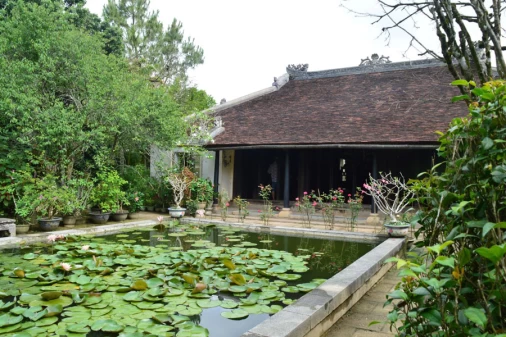
An Hien Garden House
An Hien garden house is considered the most beautiful garden house so far in Hue ancient capital. Besides...
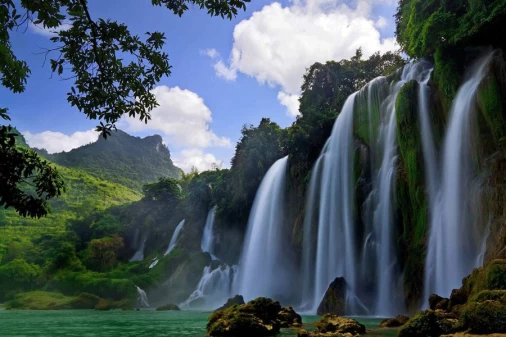
Bach Ma National Park
Before becoming a national park, Bach Ma was interested in many people because of its famous biodiversity...
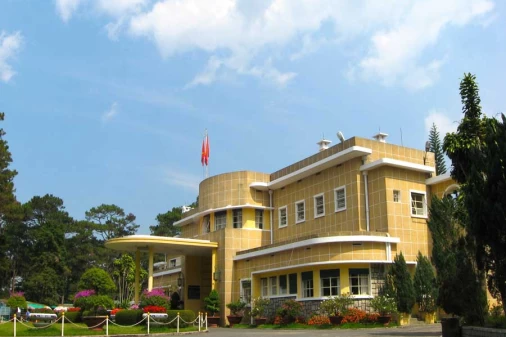
Bao Dai’s Palace
The Dalat summer retreat of Vietnam’s last emperor, Bao Dai. It’s a special piece of art-deco architecture...
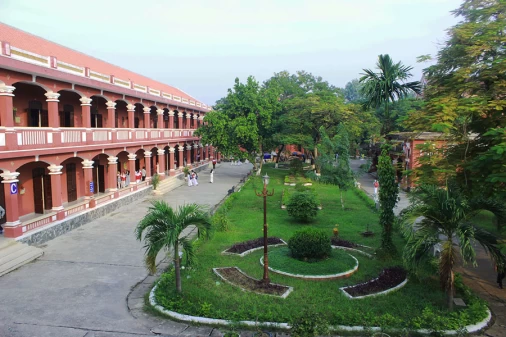
Century Old High School
For more than 120 years, the High School for Special Education – Hue is no stranger to both locals and...
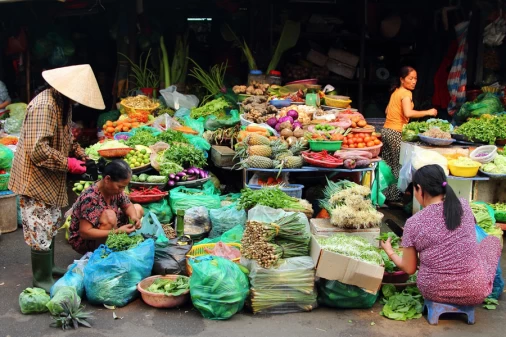
Dong Ba Market
Dong Ba Market is a famous market in Hue, if you come to Hue without going here to buy some things to...
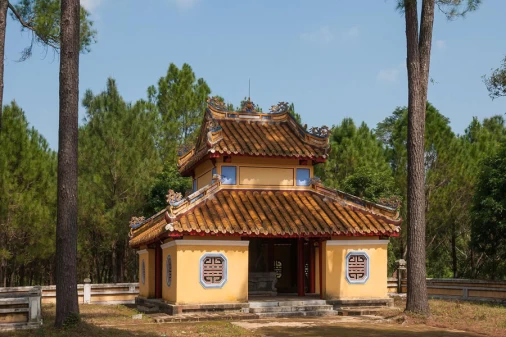
Gia Long Tomb
If asked in Hue tourist sites, which tomb should you go to? It was the tomb of Gia Long King – the founder...
Frequently asked questions
1. Visit the Imperial Citadel:
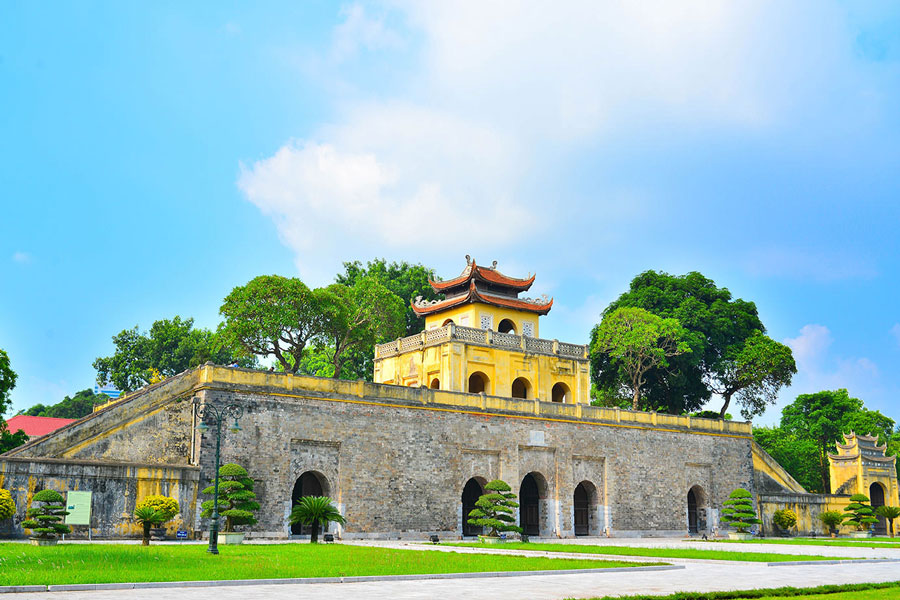
Is one of the most historic landmarks, not only in Hue but also entirely in Vietnam. This walled fortress and palace were once the home of Vietnam’s emperors. Surrounded by an impressive moat filled with waterlilies, featuring hundreds of monuments dating back to the early 19th century, including the Forbidden Purple City, royal tombs, pagodas, temples, royal quarters, a library and museum, Imperial Citadel is definitely the must-see once you are traveling Hue.
Tip: Visiting at night is an excellent option as visitors can enjoy a nightly program of dance and cultural performances.
2. Visit the Tombs of the Ancient Emperors:
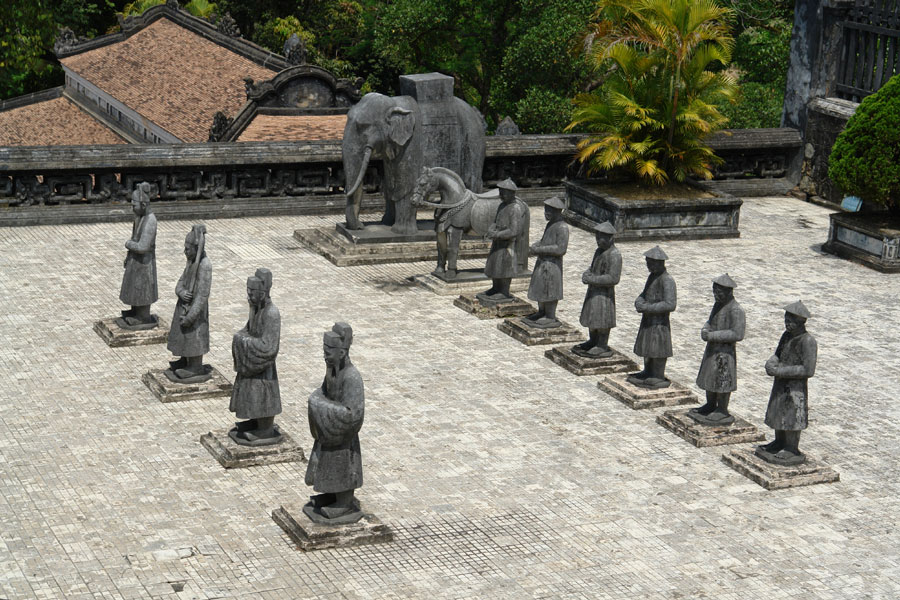
As one of the biggest draws in Hue, which were built since the 19th and 20th centuries in honor of ancient emperors, these royal mausoleums attract countless tourists to visit every year. With grandiose exterior and the sublime ‘Fengshui’ settlement, the Tombs of the Ancient Emperors may recall you how glorious the history of Vietnam is. Some of the main tombs not to miss include the Tomb of Tu Duc, the Tomb of Minh Mang and the Tomb of Khai Dinh.
3. Visit the Thien Mu Pagoda:
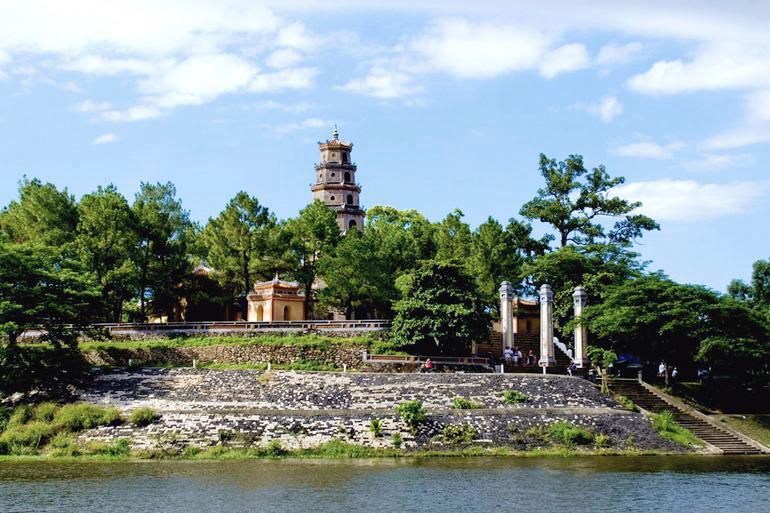
Set atop a hill, Thien Mu Pagoda is the official symbol of Hue offering breathtaking views of Perfume River and Hue Imperial City. The temple itself is a humble building in the inner courtyard, past the triple-gated entrance where three statues of Buddhist guardians stand at the alert. It also attached to a significant political event back to 1963, when the “Buddhist Crisis” was taking place and the Buddhist monk Thich Quang Duc drove to Saigon and in the protest, sacrificed himself by setting himself on fire.
4. Visit Huyen Tran Princess Temple:
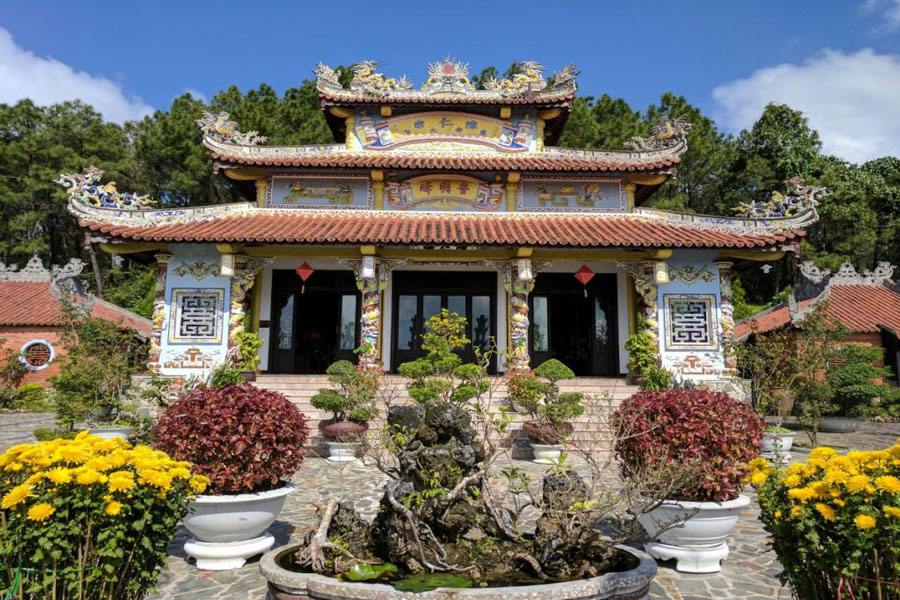
An expansive complex filled with lotus lakes, emperor monastery, orchid gardens, and a library containing documents of former kings and important figures of the Tran Dynasty. Visiting here, you can also enjoy a number of cultural activities, including incense offerings, bell-ringing ceremony, martial arts, traditional art, and music performances, as well as floral arrangements and human chess.
5. Walk along the Perfume River:
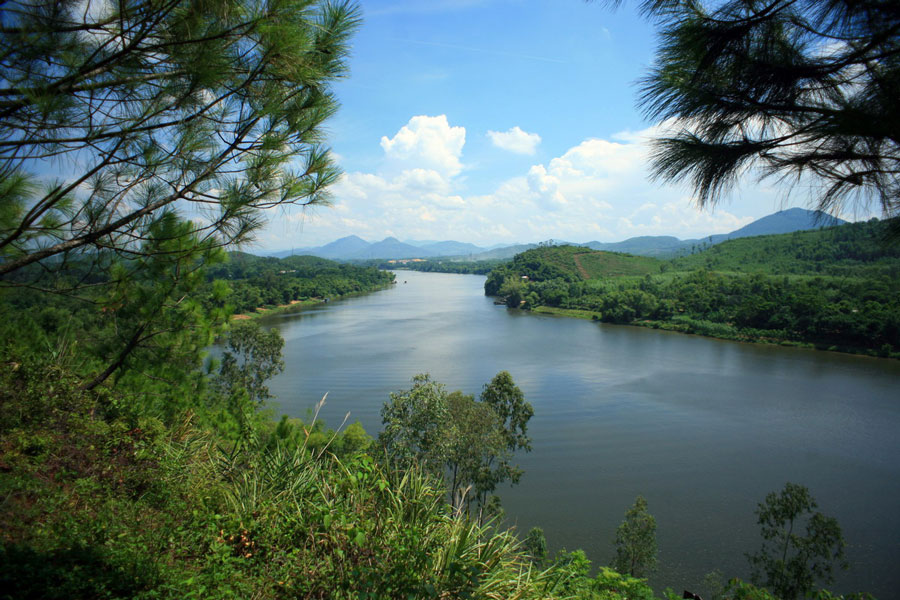
As one of the most famous waterways in Hue and Vietnam, the Perfume River is the perfect place to take it all in. Interestingly, the name was given a decade ago, as the strong floral scent flowers that dropped in the water from upriver orchards were carried through the river during the autumn months, resulting in a locals name as Perfume River. Along the banks of the river, there is a delightful waterfront promenade which is great to come for a scenic walk in the evenings. Alternatively, you can take a boat tour along the river to enjoy the river views, have an elegant meal and visit some of the major tourist sites around the area that are accessible by boat.
6. Sunbathe on Thuan An Beach:
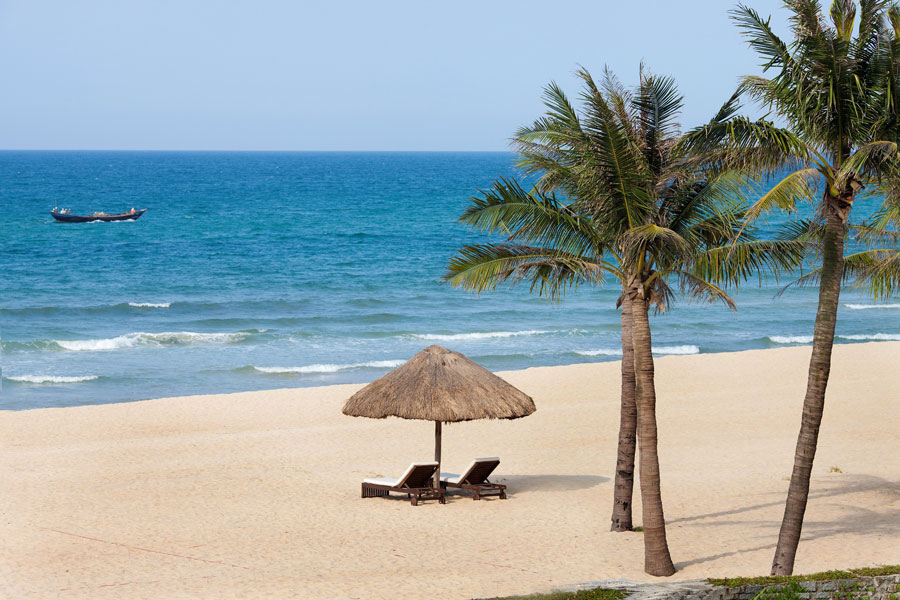
Around 14km outside of Hue, Thuan An Beach is brilliant stretch of white to off-yellow sand that many locals claim that this is one of the most beautiful beaches in Vietnam. On the way getting here, you can also see plenty of small boats, junks drift up and down the river on the left of the route, and many houses, temples, pagodas, rice fields, and gardens which successively spread out on the right. Activities in Thuan An Beach include swimming and sunbathing, so if you fancy some sea and sun then this is the spot for you.
7. Journey to Bach Ma National Park:
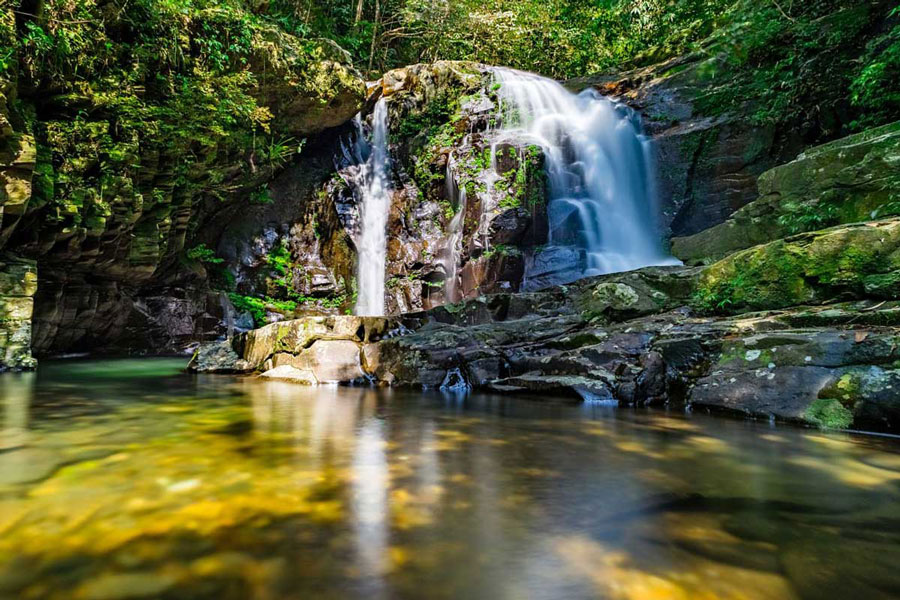
Situated in the Annamite Range, Bach Ma National Park stands at 1,500m above sea level, hosting lush landscapes, majestic waterfalls, limpid pools, hiking trails, and even some abandoned French villas. Home to thousands of rare plants and wildlife, this verdant landscape is a popular retreat for locals and travellers from both Hue and Danang, where visitors can enjoy a full day of hiking, camping, rappelling, and swimming.
8. Shop at Dong Ba Market:
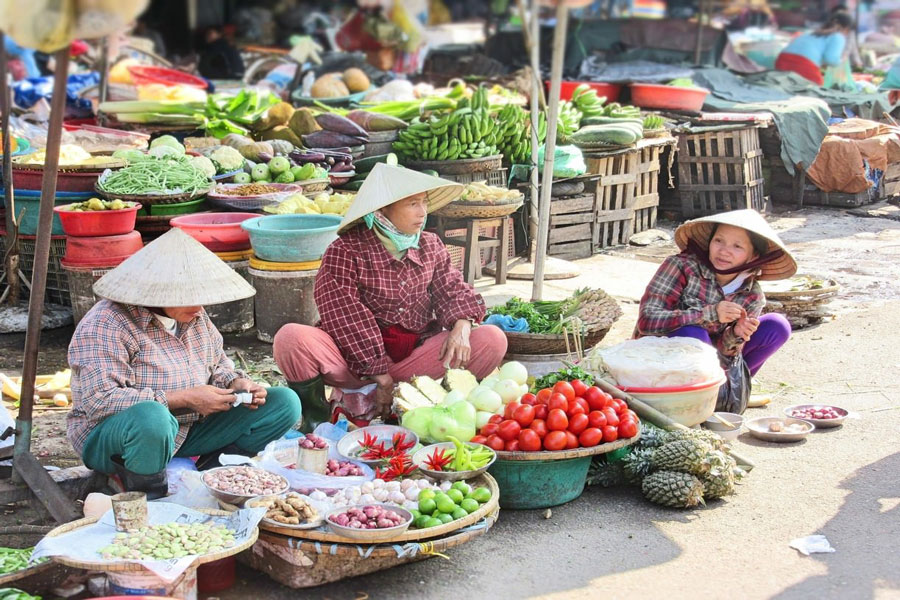
Dong Ba Market is one of the premium shopping spots in Hue if you are looking for a dose of authenticity in the city. Here you will find a lively flea market as well as a number of toothsome local food stalls offering several street foods and traditional dishes of Hue..
P/s: This spot was made famous when celebrity chef Anthony Bourdain came here and filmed an episode of his show ‘No Reservations’.
How long should it take to travel around Hue, you may ask? Well, in fact, scenics of Hue is numerous whereas our time is limited. So, we suggest a compact trip within the most agreeable itinerary of 2-day, for your to experience the most of Hue while traveling here.
Day 1: Tombs of the Ancient Emperors – Thien Mu Pagoda – Dong Ba Market

AM: Take a tour to visit three tombs of Tu Duc, Minh Mang and Khai Dinh. Admire the grandiose looks and learn about the royal practices.
PM: Visit Thien Mu Pagoda. Witness the history of Buddhism and enjoy peaceful view of Hue from height. Then walk along the bank of the Perfume River, reach to Dong Ba Market for souvenir shopping and local foods enjoying.
Day 2: Thuan An Beach – Huyen Tran Princess Temple – Imperial Citadel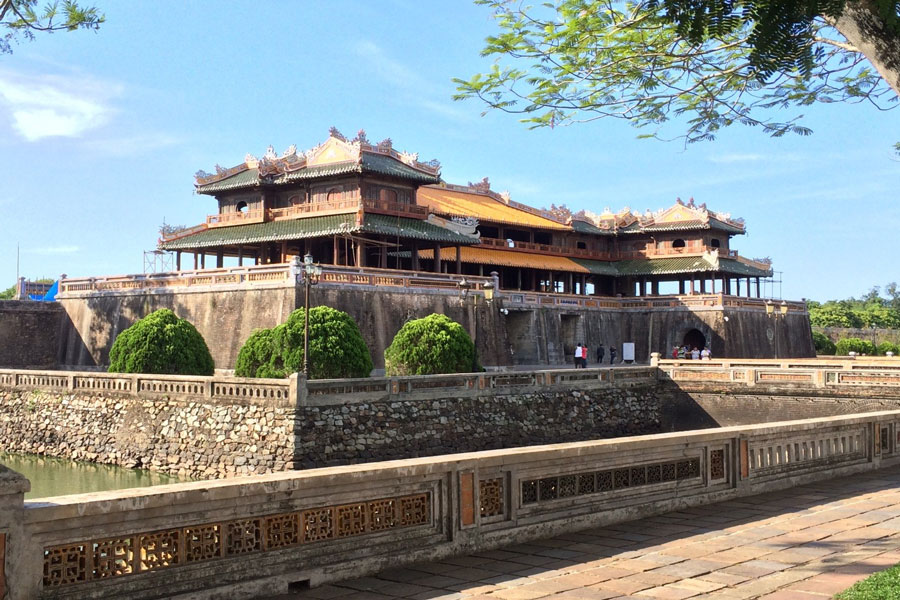
AM: Head to Thuan An beach. Enjoy sunbathing and swimming in the warm sea. Have lunch with seafood then return to city.
PM: Visit Huyen Tran Princess Temple and experience some cultural activities. Then move to Imperial Citadel to explore the mighty architecture and enjoy a night performance.
If you are a veteran backpacker, please feel free to manage the trip your own and alter it when needed, else, we recommend you join a tour organized by a professional company, that can free you from hassles and keep you safe throughout the journey.
Some of Hue’s best dishes were once exclusively served to past emperors and royal families of the Nguyen Dynasty, but now travelers can easily find local restaurants serving these specialties. When it comes to Hue cuisine, it’s predominantly sweet and spicy in flavor from fresh herbs and mint mixed with the quintessential fish sauce. Enjoy the best foods of Hue while you are staying here.
1. Bun Bo Hue (Hue Beef Noodle Soup):
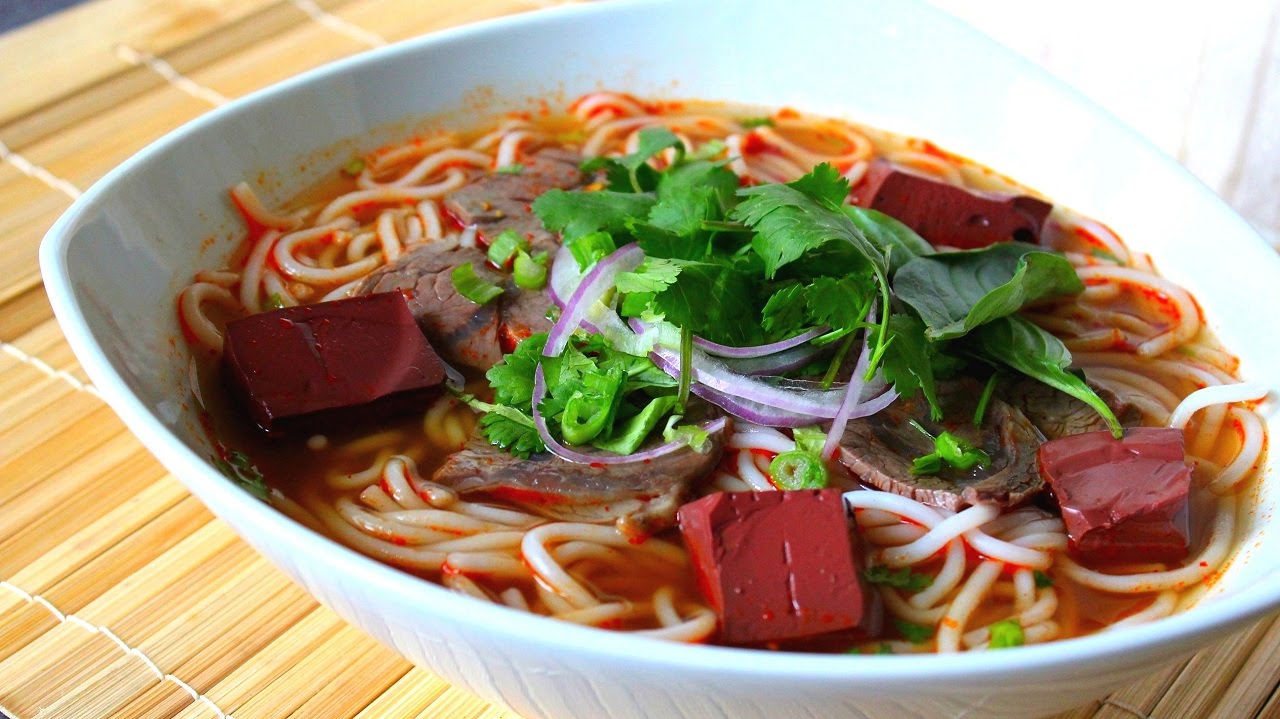
A regional specialty comprising thick rice vermicelli and various toppings in a thick soup. It’s sweet, sour and spicy combined in a bow as flavored with boiled bones and shank, annatto seeds, lemongrass, ginger, fermented shrimp paste, chili oil, and sugar. As for the toppings, expect congealed pig blood, beef or pork knuckles, beansprouts, lime wedges, cilantro, diced green onions, banana blossoms, mint, and basil. You can also ramp up the spiciness by adding fresh chilies and fermented fish sauce to your Bun Bo Hue.
2. Com Hen (Clam Rice):
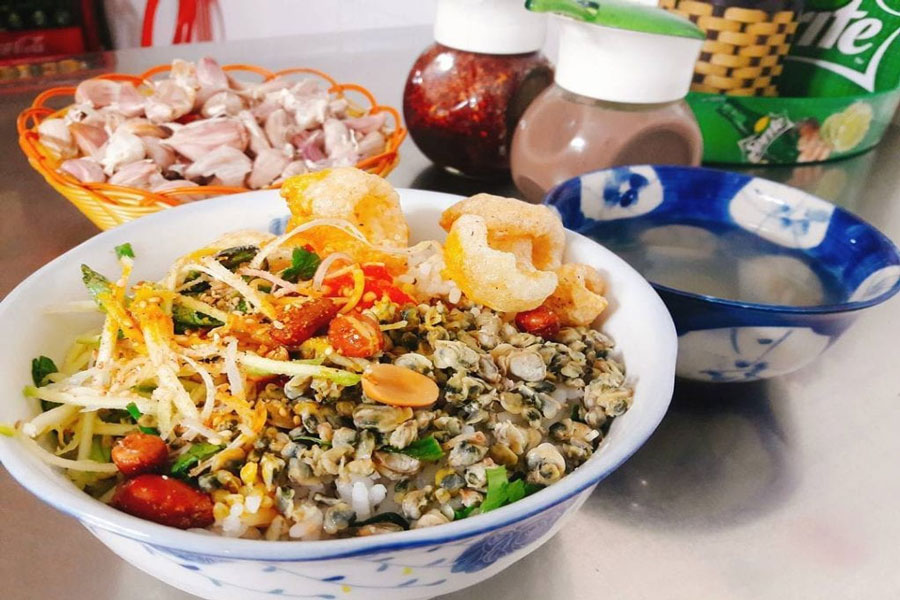
Consists of rice topped with baby basket clams, crispy pork skins, roasted peanuts, shrimp paste, and fresh greens. The clams are stir-fried with chopped garlic, onion, fish sauce, pepper, and mint leaves before they’re poured over a plate of steamed jasmine rice. Com Hen is often accompanied by a bowl of clam broth as well as a platter of coriander leaves, shredded banana blossoms, and bean sprouts.
3. Nem Lui (Hue Lemongrass Skewers):
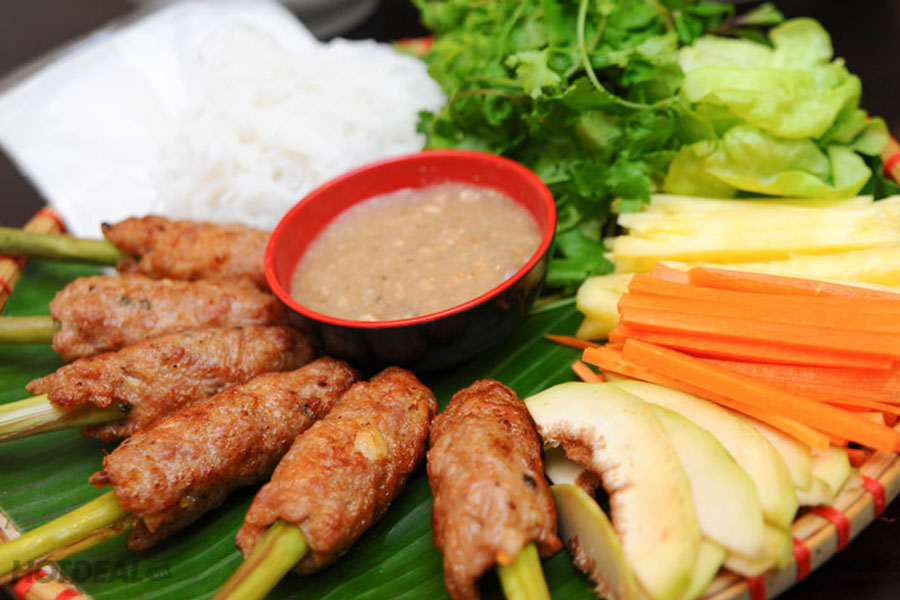
Is a Kebab-like dish using lemongrass stalks, which is wrapped with marinated meat (usually pork or beef) then grilled over a charcoal stove. Diners are also served with a side of rice paper, lettuce and cucumber slices, rice vermicelli, and fresh herbs. It’s available as an appetizer at just about all local restaurants and hotels in Hue. For added flavor, dip Nem Lui into a local sauce made with ground peanuts, fermented beans, sesame seeds, shrimp paste, chopped garlic, chilies, and shallots.
4. Banh Khoai (Vietnamese Crepe):
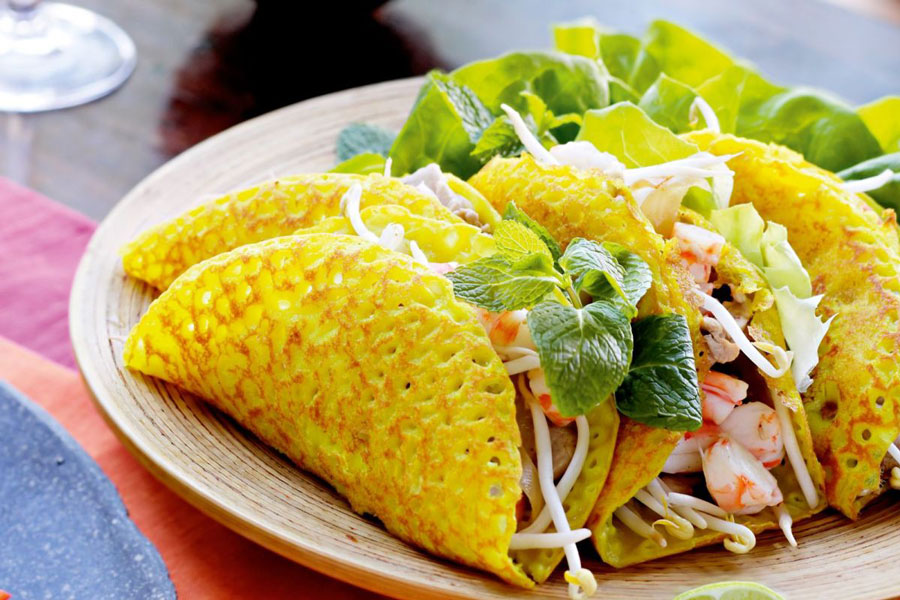
Readily available at roadside stalls or local markets, this open-faced crepe is typically filled with pork, shrimp, scallions and beansprouts. But you can also find several food vendors offering this local snack with quail eggs and starfruit. As with most Vietnamese dishes, Banh Khoai is best eaten with a side of fresh greens and herbs as well as a fermented soybean dipping sauce.
5. Banh Beo (Steamed Rice Cakes):
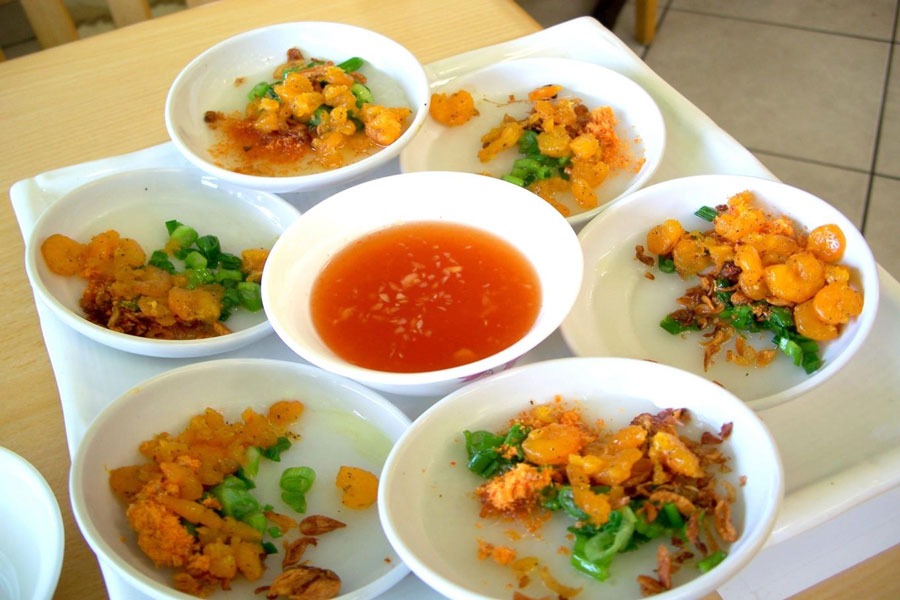
Topped with dried shrimp, deep-fried pork rind, shallots, rice vinegar, and fresh herbs, and accompanied with a side of fermented-fish dipping sauce and red chilies, Banh Beo is a light dish which can be consumed any time of the day.
6. Banh It Ram (Fried Sticky Rice Dumplings):
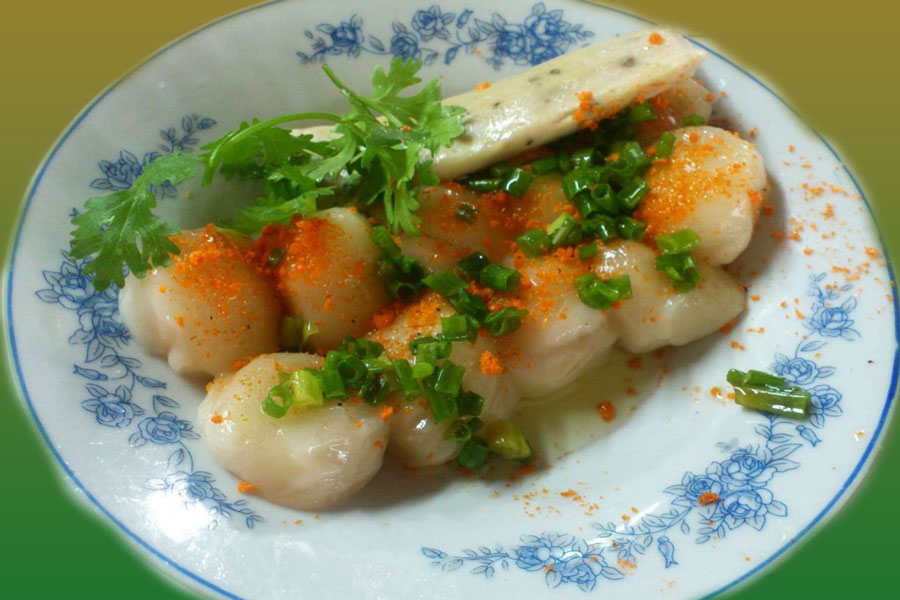
Banh It Ram pairs steamed sticky rice dumpling with a crispy patty that’s also made with sticky rice, and is topped with a savory mix of green scallions, shrimp and pork. Often eaten as an appetizer instead of dessert, Banh It Ram can be found anywhere from a sit-down food stall or an upscale restaurant.
7. Bun Thit Nuong (Vermicelli Noodles With Grilled Pork):
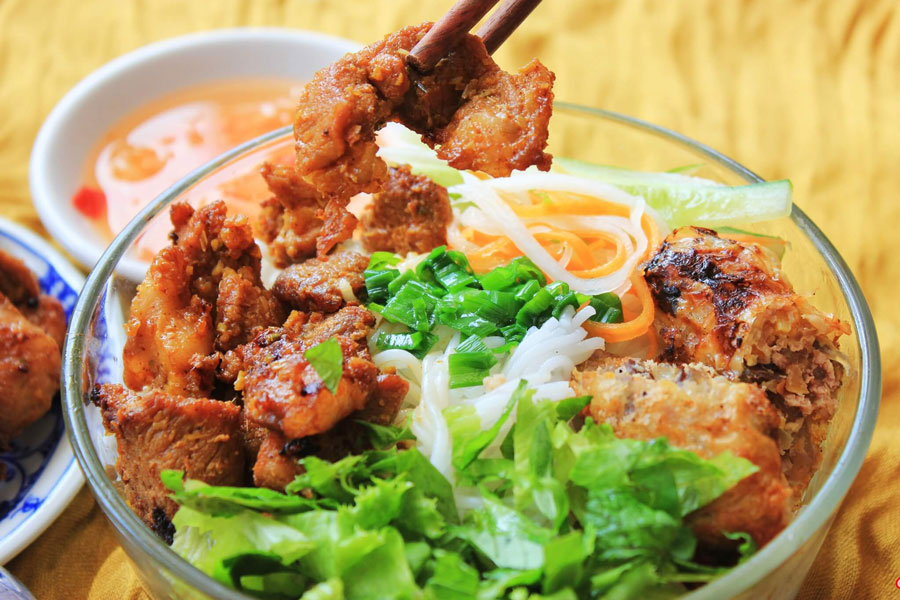
Comprises rice vermicelli noodles, grilled pork, lettuce, cucumbers, beansprouts, pickled daikon, basil, mint, chopped peanuts, and deep-fried spring rolls. This hearty dish also comes with a side of pickled carrots, fresh lettuce, and fermented fish dipping sauce. Eat like the locals by pouring the sauce over the noodles for an extra kick of flavor.

Hue weather enjoys hot and humid seasons throughout the year, however, it’s hotter than most cities during the summer months due to the hot south-westerly wind from Laos. The hottest months are May and August when it can get as high as 40°C during the day. Besides, the heaviest rainy period falls between September and December, temperatures drops to around 19.7°C and rainfall tends to occur frequently and lasts for hours.

So the best time to visit Hue is between January and April, with temperatures averaging between 20°C and 24°C. Rainfall is common but often comes in a light drizzle during the day. Meanwhile, you can still comfortably explore Hue’s historical sites and temples on foot.
Furthermore, annual festivities are also celebrated at this time of the year, such as Tet (typically falls between January and February) and the Hue Festival (April). Visitors can enjoy cultural shows, vibrant markets, traditional music performances, royal ceremonies, and seasonal regional dishes.

By air: Vietnam Airlines is currently the only airline that serves Phu Bai International Airport (about 15 km South of Hue city center). Travel time is approximately 1 hour, either from Hanoi or Ho Chi Minh City and costs about $60 for economy class ticket. From Phu Bai International Airport, tourists must catch a transfer bus, or a cab to get in the city, which cost around $12 for both.
By bus: From Hanoi or Ho Chi Minh City to Hue is a rather long overnight bus trip. Open tour bus tickets can be purchased in tourist area of all three cities with cost around $30.
By train: Travelling to Hue by train can be a pleasant way with express trains with soft-berth air-conditioned compartments with reasonable prices. Price starts at $35.
Throughout this article, we wish you to have an idea of how to travel to Hue for your best experience. In case you are looking for your own travel agent, who can offer a wonderful and hassle-free trip to Hue, please feel free to let us know. We always commit our best to make it your once-in-a-lifetime journey.
You may also like
Glimpse Of Central Vietnam 5 Days
- Depart Time:Daily
- Starts/Ends:Da Nang/Da Nang
- Tour type:Private Tours
- Travel Style:Heritage Tours, Family Tours, Culture & History
- Activities:Walking tours, Sightseeing Tours, Cultural, religious and historic sites tours, City sightseeing tours
- Suitable for:Solo, Family, Group, Couple
- Age range:1 To 90 Years
- Operated in:English, French, Spanish, German, Italian
Must See Of Central Vietnam 6 Days
- Depart Time:Daily
- Starts/Ends:Da Nang/Da Nang
- Tour type:Private Tours
- Travel Style:Heritage Tours, Family Tours, Culture & History
- Activities:Walking tours, Sightseeing Tours, Cultural, religious and historic sites tours
- Suitable for:Solo, Family, Group, Couple
- Age range:1 To 90 Years
- Operated in:English, French, Spanish, German, Italian
Highlights Of Central Vietnam 7 Days
- Depart Time:Daily
- Starts/Ends:Da Nang/Da Nang
- Tour type:Private Tours
- Travel Style:Heritage Tours, Family Tours, Culture & History
- Activities:Walking tours, Sightseeing Tours, Local culture tours, Cultural, religious and historic sites tours, Countryside and village visits tours
- Suitable for:Solo, Family, Group, Couple
- Age range:1 To 90 Years
- Operated in:English, French, Spanish, German, Italian
 France
France  Spain
Spain  German
German  Italian
Italian 




 Vietnam Tours
Vietnam Tours  Cambodia Tours
Cambodia Tours  Myanmar tours
Myanmar tours  Thailand Tours
Thailand Tours  Laos Tours
Laos Tours